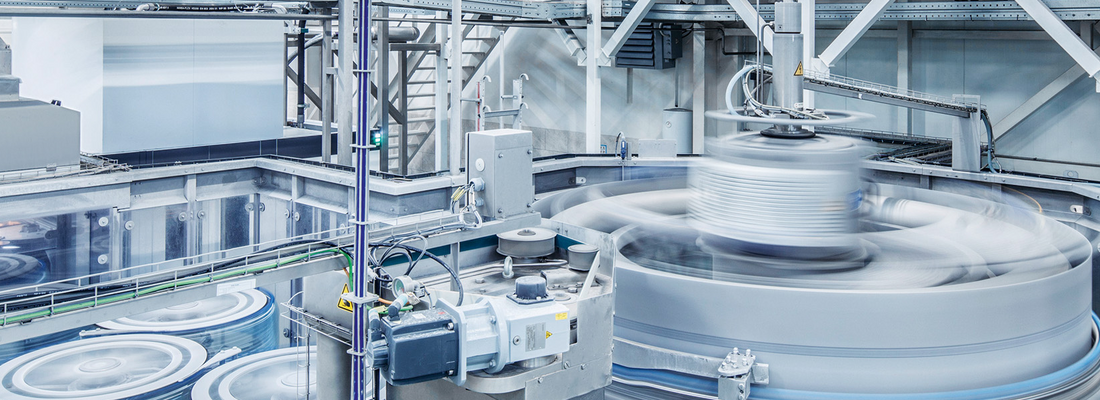With three important improvements KHS has qualified its modular Innofill PET DRV filler for faster and even more effective filling of still and carbonated beverages into PET bottles with the usual reliable standard of quality – even under extreme conditions.
Normally used with a stretch blow molder in a duo block – or with an additional labeler in a TriBlock – the Innofill PET DRV now boasts three new features. This enables the filler to cater even better for the growing demands of the beverage industry specifically with regard to still and carbonated beverages: firstly, bottlers profit from higher speeds for large containers without having to compromise on flexibility. Secondly, KHS has redefined its own concept of high speed with an output of up to 90,000 PET bottles per hour. And thirdly, the use of bottle base full jet cooling ensures an even more reliable standard of quality.
High capacity for large containers
With its new Innofill PET DRV HC (high capacity) filler option, KHS provides precisely the extra flexibility the dynamic market requires when filling large containers holding 1.5 liters or more. Thanks to two technical optimizations the machine output can be boosted by up to 15% for these sizes of container. On the one hand, the product bowl has been raised, increasing the static height between the tubular ring vessel and filling valve. This results in a higher filling speed. To be able to provide full flexibility despite this, on the other hand the pneumatic switching valve between the tank and filling valve now has three switching steps instead of two.
This gives beverage producers the choice between three different filling speeds on the Innofill PET DRV HC, allowing them to now fill both small and large container formats in optimum quality and time. CO2 consumption is not affected by the different filling speeds: whereas 150 grams of carbon dioxide per hectoliter are needed for a 300-milliliter bottle, as the volume rises this amount gradually decreases, reaching about zero for a 1.0-liter container. For larger containers no CO2 is needed at all. “The reason for this exceptionally low consumption lies in us doing away with nozzle technology in the filling valve which we used to use to control the filling speed in the bottle,” explains Manfred Härtel, filling product manager for KHS. “On our new modular platform, this is regulated on the product path between the tubular ring bowl and filling valve so that gas is no longer lost.”









